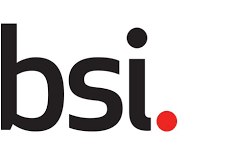Please be advised that a New Work Item Proposal has been loaded to the BSI Standards Development Portal for comment.
Any comments received will be submitted to the national committee IST/33 “Information security, cybersecurity and privacy protection” for consideration when deciding the UK response to the associated Standards Development Organisation.
1) Proposal: ISO/PWI TS 230-13, Test code for machine tools — Part 13: Guidelines on acceptance tests for machine tools used as coordinate measuring machines.
Please visit ISO/IEC NP TS 5689 Title missing
Comment period end date: 09/09/2023
Scope
This document provides the followings:
CPS conceptual model and its specific characteristics
– a conceptual model of cyber-physical systems (CPS) and its general features;
– specific characteristics of CPS compared to other related concepts; Concerns and security frameworks
– security concerns as the basis for the discussion of security risks and security controls for the CPS based on the conceptual model;
– several security frameworks to address those security concerns;
Practical use cases for CPS
– use cases based on the respective security frameworks for CPS;
– provision of visibility of use cases into the specific use of the security frameworks, etc.
This document does not provide specific security controls needed in cyber-physical systems.
This document applies to all sectors where CPS are or will be present, which encapsulate a diverse set of sectors ranging from industrial (e.g., manufacturing) to public (e.g., smart cities).CPS stakeholders such as users, developers, and operators can have a common understanding of CPS (e.g., concepts, risks, security framework) through this document.
Purpose
While cyberspace and physical space are highly integrated into “smart cities” or “smart supply chain” with the development of IoT, inter-organizational data exchange platforms (e.g., data space) and sophisticated data-driven applications, it is concerned that impacts caused by security incidents will increasingly grow in scale.
To address increasingly sophisticated cyber threats, there is a particular need to importantly recognize the concept and specific use cases of “cyber physical systems (CPS)” and identify security and related risks under CPS. This work would integrate the findings of the various documents developed for such objectives (e.g., NIST, METI) and provide common suggestions.
Based on the above understanding, this project would provide (1) CPS conceptual model, (2) Concerns and security frameworks (3) Use cases.
The clear definition, the conceptual model and practical use cases of CPS will be useful for the purpose of improving the efficiency of all social systems, creating new industries, and improving intellectual productivity through developing and operating CPS.
Identification of security and related concerns and mitigations with security frameworks promotes better security management as a part of efforts to ensure trustworthiness in complex environments such as CPS, where multiple IoT systems work together to provide sophisticated functions.
2) Proposal: ISO/NP 14306-2, Industrial automation systems and integration — JT file format specification for 3D visualization — Part 2: Part 2: Vocabulary.
Please visit https://standardsdevelopment.bsigroup.com/projects/9023-08904#/section
Comment period end date: 09/08/2023
Scope
As part of the proposed change for ISO 14306 to become a multipart format specification this NWIP covers the creation of Part 2 of the revised format.
ISO 14306-2 edition 1 documents the Vocabulary of the ISO 14306 specification.
Purpose
With the change of ISO 14306 to become a multi-part standard a specific Vocabulary document is required. This NWIP defines the Vocabulary that is used for the complete series of ISO 14306 parts.
3) Proposal: ISO/NP 23247-5, Automation systems and integration — Digital twin framework for manufacturing — Part 5: Part 5: Digital thread for digital twin.
Please visit https://standardsdevelopment.bsigroup.com/projects/9023-08905#/section
Comment period end date: 09/08/2023
Scope
This part of ISO 23247 series specifies how the digital thread enables the creation, connectivity, management and maintenance of manufacturing digital twins across the product life cycle by defining principles, showing methodologies, and providing use case examples.
Purpose
The digital twin in manufacturing is a virtual representation of the physical model of asset, process, system, or service by collecting data from manufacturing, maintenance, operations, and operating environments. The digital twin is a living model that continuously updates and changes as their counterpart changes to represent near real-time status, working condition or position.

